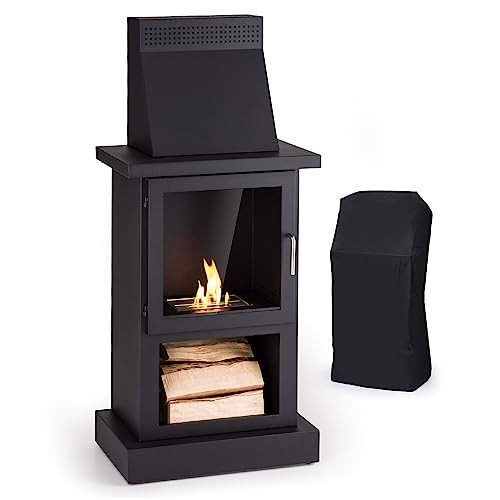The Best Way To Explain Small Fireplaces To Your Mom
A Comprehensive Guide to Small Fireplaces: Efficient Heating and Cozy Living
In a period where energy effectiveness and space optimization are becoming significantly important, small fireplaces have emerged as an attractive alternative to traditional, bulky hearths. These compact heating services offer heat and a focal point for any space, heightening both convenience and visual appeal. This short article explores the various types of small fireplaces, their advantages, setup factors to consider, and upkeep suggestions, ultimately helping property owners make notified decisions when thinking about these charming heating choices.
Comprehending Small Fireplaces
Small fireplaces use a range of styles, consisting of electric, gas, ethanol, and wood-burning designs. Each type provides special benefits and style possibilities, making them ideal for different living areas.
Kinds Of Small Fireplaces
Fireplace Type
Description
Pros
Cons
Electric
Uses electrical power to create heat. Uses lots of styles, consisting of wall-mounted and freestanding systems.
- Easy to install
- Low upkeep
- No venting needed
- Limited heat output
- May sustain greater electrical energy costs
Gas
Burns natural gas or propane. Frequently offered as logs in a traditional fireplace or modern designs.
- Efficient heat output
- Cleaner than wood
- Easy ignition
- Requires gas line installation
- Some systems need venting
Ethanol
Burns bioethanol, offering genuine flames without a chimney.
- Eco-friendly
- Portable
- No setup required
- Limited heat output
- Higher fuel costs
Wood-Burning
Traditional fireplaces that burn firewood. Often utilized in more rustic settings.
- Great heat output
- Rich ambiance
- Can be utilized throughout power interruptions
- Requires a chimney
- Regular upkeep and cleansing
Advantages of Small Fireplaces
- Space Efficiency: Small fireplaces are perfect for homes, condos, and smaller homes. They maximize warmth without using up excessive floor space.
- Economical Heating: In certain cases, small fireplaces can supplement main heater, reducing overall energy costs while producing a more comfortable environment.
- Atmosphere and Aesthetics: They offer an inviting centerpiece to a room, developing a cozy environment best for relaxation and celebrations.
- Flexibility: Available in various styles and styles, small fireplaces can match any decoration, from modern minimalist to rustic traditional.
Installation Considerations
When pondering a small fireplace, installation is a vital element that can affect the option of model. Below are useful factors to consider:
- Local Regulations: Building codes can vary by place; always check regional standards before setup.
- Ventilation Needs: Depending on the type, small fireplaces may require various ventilation systems. Gas fireplaces might need venting outdoors, while electric models do not.
- Power Source: Electric designs need proximity to electrical outlets, while gas and ethanol designs may need a gas line or fuel storage.
- Weight and Structure: Installing wall-mounted units may need enhanced wall locations, whereas free-standing designs are simpler to relocate.
Upkeep Tips
Like any other home appliance, small fireplaces need routine maintenance to operate successfully and safely. Here are necessary upkeep pointers for various fireplace types:
For Electric Fireplaces:
- Cleaning: Wipe down the system with a soft fabric to remove dust and keep the heater ducts clear.
- Inspection: Check the power cable routinely for any damages or signs of wear.
For Gas Fireplaces:
- Annual Inspections: Schedule annual inspections by an expert to ensure safe gas circulation.
- Clean the Logs: Regularly tidy the burner and logs to maintain ideal efficiency.
For Ethanol Fireplaces:
- Fuel Storage: Store ethanol fuel securely away from direct sunshine and heat sources.
- Regular Cleaning: Clean the burner after each use to keep performance and avoid soot buildup.
For Wood-Burning Fireplaces:
- Chimney Sweeping: Have the chimney expertly cleaned up as soon as a year to avoid creosote accumulation.
- Fire wood Storage: Only use dry, seasoned wood to reduce smoke and promote effective burning.
Regularly Asked Questions
1. Can I install a small fireplace myself?
While some electric and ethanol fireplaces are reasonably easy to set up, it is suggested to hire an expert for gas and wood-burning systems to ensure compliance with regional building regulations.
2. How much does it cost to run a small fireplace?
The cost will differ depending on the kind of fireplace. Typically, electric fireplaces may incur higher electrical energy costs, while wood-burning choices can draw from renewable firewood supplies.
3. Do I need an authorization for setup?
Permits are generally required for gas and wood-burning fireplaces due to their installation complexity and security regulations. Always check with local authorities.
4. How long can I run an electric fireplace?
The majority of electric fireplaces can run for extended periods; however, it's recommended to follow maker guidelines to avoid overheating or harming the unit.
5. What Best Fireplace of small fireplace is best for a small area?
This mostly depends upon private needs. Electric models are flexible and easy to install, while gas and ethanol options supply real flames with effective heat output.
Small fireplaces represent a practical and elegant option for those seeking efficient heating solutions in compact home. With various types readily available, property owners can select designs that align with their aesthetic choices and area requirements. By understanding the installation procedures and routine maintenance required, people can delight in the comfort and ambiance that small fireplaces provide for years to come. Whether for a cozy evening at home or a welcoming space for gatherings, small fireplaces are an enduring aspect of modern and traditional decor alike.
